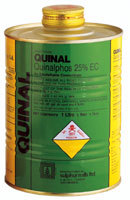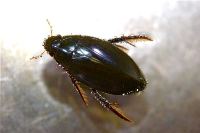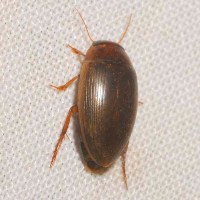|
Case worm
| Symptom of Damage : |
- Full grown caterpillars found in tubular cases made out of paddy leaf, attached hanging to the leaf blade. The caterpillar skeletonises the leaves in ladder like manner. Pupation in the cases, which are attached to the lower side of the basal leaves.
- Caterpillars feed on green tissues of the leaves and leave become whitish papery
- Tubular cases around the tillers by cutting the apical portion of leaves
- Floating of tubular cases on the water
- Leaves cut at right angles as if with a pair of scissors.
|
 |
 |
| Floating of tubular cases around the tillers |
Papery white leaves |
|
| Top |
| Identification of pest : |
|
Scientific Name - Orseolia oryzae
- Egg :
Eggs are light yellow, disc like, smooth and irregular in shape. They are laid on the underside of the leaves floating on the water.
- Larva :
They hatch into green caterpillars with orange brownish head. Each caterpillar lives inside a tubular case and hang down the leaves. Full-grown caterpillars measure upto 15 mm length.
- Pupa :
It pupates inside the leaf case. Fresh pupae are milky white, which gradually turn to light yellow.
- Adult :
The adult is a small delicate moth having white wings speckled with pale brown wavy markings. Females are larger than males. Egg lying takes place in the night. |
 Larva Larva |
 Adult Adult |
 Moth Moth
|
|
| |
|
| Top |
| Management Strategies: |
|
Cultural Methods:
- A rope may be passed over the young crop for dislodging the larval cases from the tillers and then the water may be drained for eliminating them or pass the rope from one end to other end to dislodge the eggs.
- Use of correct fertilizer application, wider spacing and early planting.
- Application of kerosene at the rate of six litres/acre.
|
 |
 |
| Pass the rope to dislodge casetubes and eggs |
Apply Kerosene to Water |
|
|
Chemical Methods:
- Spray methyl parathion 0.05% (or) Quinalphos 0.05%
|
 |
 |
| Spray Quinalphos |
|
|
Biological Methods:
- Snails are useful predators of eggs of the rice caseworm.
- The larvae are fed upon by the hydrophilid and dytiscid water beetles.
- Spiders, dragonflies, and birds eat the adults.
|
 |
 |
| Hydrophilid beetle preys caseworm larva |
Larvae are fed by
dystid water beetle |
| Top |
|


 Larva
Larva Adult
Adult Moth
Moth





